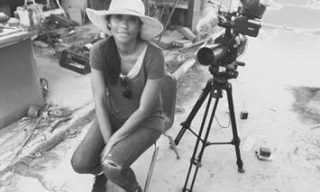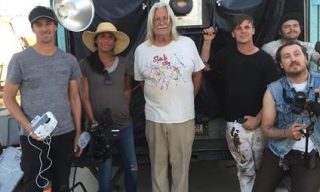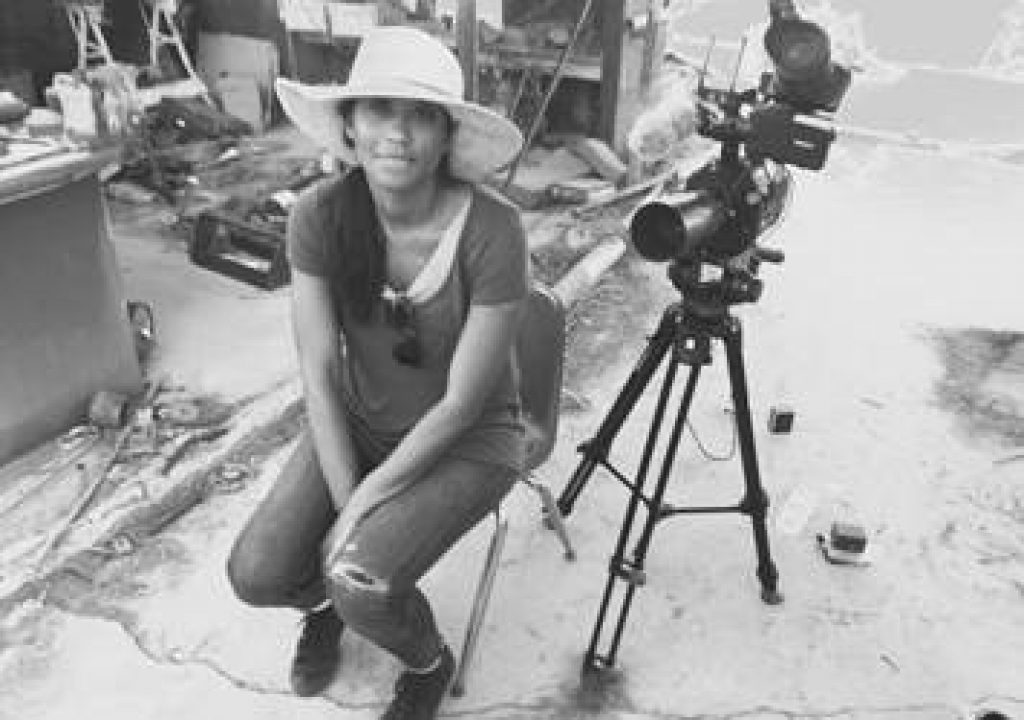
I grew up in a place where people waited all summer for the arrival of the annual fair. From the moment I saw the trailers lined up and people unloading the amusement rides at our county’s fairgrounds I would start to countdown the days when I could walk through the gate and soak up the rare sounds, taste all that was at any other time of the year forbidden, and wrap myself in the colorful lights and excitement. It was in that moment, when I would stand in line for my first ride of the season, that a rush of emotions – anxiousness, nervousness, sadness, joy, and a belief that I was testing something inside me — would flow through me. I would see this look in other people as they too dipped into this world where all things made you feel like you were floating…
I believe there are different worlds that we all live and operate in which drive us to and from our dreams and impact our ability to see reality. Most of us see who we think we are in these spaces, constantly creating short little films in our heads, and memories of how they were produced in our hearts. This process has the tendency to dictate who we let in and who we decide to leave out.
In my latest documentary project The Picture Show, I tell the story of individuals who explore a different image of themselves and their circumstances in one of the most overlooked environments in America. As their seemingly distant worlds collide, they are all forced to consider how to help themselves when the dream world they once lived in begins to become a reality.
As a filmmaker I am always excited about unique mediums that bring together people who may not otherwise interact in the same spaces at the same time. These moments challenge me to find ways to capture the natural essence of my subjects despite environment or a person’s background. It also allows me to use tools that I may not otherwise use to capture these unique moments. The intersection of characters whose lives I share in The Picture Show are the seemingly forgotten souls living in Slab City – people like the contemporary artist Ian Ruhter who’s known for pushing the boundaries of an original photographic medium called wet plate collodion, for the larger-than-life images he creates and for his camera – the world’s largest wet plate camera truck — and his attempts to photograph them. There was even a surprise visit from actor, director and photographer Gary Oldman, who also makes and studies wet plate photography.
I wanted to capture and enhance this process and the documentary with a multi-functional camera. I believed the Sony FS7 would do the job – and I was right.
Stepping into the lives of the characters at the heart of this film, their homes, camps, kitchens, prayer circles, and the places where they entertain I found myself experiencing one of the most beautiful spectacles taking place. I needed a versatile camera that would infuse a similar style, and effortlessly reflect the daily lives and angst of the Slab City residents. I also wanted to document Ruhter’s anxiety as he tried to break a photography world record and still be able to capture Oldman when he visits in Slab City and he and Ruhter attempt to make wet plate images together.
SLAB CITY:
The people who have made a home along the Salton Sea, a shallow, salted lake approximately 350 square miles long in California’s Imperial and Coachella Valley, represent a cross-section of life in America. The main communities along the sea are Bombay Beach, Slab City and East Jesus. Hip beatniks, Ivy Leaguers, drug addicts, the very rich and the very poor coexist in this place that on the surface seems contrary to human survival.
Most of our time filming was spent in Slab City, an unrestricted and unregulated homeless encampment, where individuals are overcoming some of the harshest conditions in America. Slab City first received notoriety through a man named Leonard Knight, a New Englander who spent three decades creating a man-made structure called Salvation Mountain. Among the many painted religious messages covering the mountain, the main theme stands out: God is Love.
Through the years Salvation Mountain has gained global recognition. To me it stands as the mouth and protector over all of Slab City. Knight was the first person to give a man named “Builder Bill” a chance when he first arrived. This opportune meeting led “Builder Bill” on a path where he would create “The Range,” a modern day vaudeville-type variety show where residents and visitors flock to and perform every Saturday at dusk. This stage brings people together.
Over the course of two years I have documented and told the stories of individuals in this community: Slab City residents like Ellen and Preacher Dave, a man whose desert sermons unite and bring light to those who may have spent too much time in the darkness. I have been allowed to spend hours in the inner sanctums of the homes, camps and incredible backdrops like The Haven, a place where recovering addicts are counseled and fed by Preacher Dave. It is those offsite excursions and the incredible insights gained from heartfelt discussions that provide an important human dimension to The Picture Show project.
The main character in The Picture Show is Ruhter, who is using one of the oldest photographic processes in a way no one else currently is. Ruhter gets in his moving truck, which serves as a camera, and photographs Slab City residents using gigantic life-sized glass plates called Ambrotypes.
We’ve all seen wet plate portraits in history books. It’s how they captured the first images of American legends like Abraham Lincoln and Billy the Kid. Because of the intense physical and technical requirements involved, the photographer and subject interact and work on the image for at least a few hours. The ghostly, magical images portray an authenticity rarely seen in modern life, and the difficult process of making them yields an unexpected alchemy of its own.
The Mechanics of Filming This Process
It had been a long time since I stepped away from DSLR cameras, but I made the transition away from them after feeling that the DSLR produces a cookie-cutter image. I felt this story had more layers. DSLRs are difficult in handheld situations and using heavy tripods or rigs in Slab City just wasn’t an option.
I selected Sony’s FS7 as our main camera due to the beautiful cinematic picture it produces. There are so many things to like about this camera, from its ability to shoot 4K, its low-light capability and dynamic range, and its form factor. In short, it provides the best of both worlds because it has qualities of an ENG camera that provide a more cinematic landscape, while not being too intrusive. It served as the perfect companion and allowed us to visually showcase our layered characters and dynamic story exactly as we had envisioned it.
One of my goals on The Picture Show was to shed light on this tattered community of misfits and outsiders. At the same time I was highlighting Ruhter as he employs his photographic process to achieve his goal of creating images in the most natural way possible – with no major production set-ups, no light kits and no stopping the process once it has started. To fully understand and appreciate my subjects, I was able to break off and spend time following them more closely before and after the wet plate picture-making process. In my mind there were a few different goals and I didn’t want to lose what I call “the story within the story” that takes place through all these subjects eventually documenting each other.
I wanted to document three different scenes from previous shooting adventures with Ruhter, the first being Ian and his technician Will Eichelberger’s arduous experience making the wet plate images. To do this, they carry a 100-pound piece of glass into the darkroom and make it light-sensitive by pouring collodion onto the plate to make it wet. Then, they load the plate into the “camera” (that is inside the camera truck). Ruhter is unique in that he views his subjects from inside his massive camera, which also doubles as the darkroom for developing the plates.
I’ve captured them going through this process before, in places like Monument Valley, Joshua Tree, New York, Los Angeles and Tahoe, but this time I wanted to FINALLY be able to really see what was happening throughout the entire process. This is where the Sony cameras shined.
My goal was to be a “fly-on-the wall” as much as possible during the photo-making sessions when Ruhter engages with the subjects, who are also the characters in the film. The FS7 enabled me to discreetly capture beautiful images of this long-standing practice. I also needed to be prepared for on-camera conversations I would have with subjects throughout and after the photo session. I was able to turn the camera and start shooting on on-the-fly when the opportunity arose.
It was 98 degrees or hotter every day in Slab City and it felt like 110 on the days we ventured off to shoot in Bombay Beach, a community directly along the Salton Sea. We constantly had to adapt to changing lighting conditions. One minute, we were under the harsh, bright light of the Sonoran desert, and then the next moment shooting inside the camera truck in near pitch-black darkness. The FS7 captured each scenario easily. The camera’s low-light capabilities even allowed me to capture images inside the wet plate collodion photography process that were beyond what I thought possible.
We shot quality, usable video inside the world’s largest camera! I don’t think anyone has captured this kind of process inside a camera before. The FS7 was able to pick up amazing detail beyond what the eye can see, without distorting the image in front of me. If you know photography, then you know that complete darkness is required inside a camera or darkroom, so being able to see what was happening was extraordinary.
After testing the FS7 prior to heading to the Salton Sea and seeking advice from expert DPs, like Rob Featherstone, who have used Sony set-ups for years, I decided to shoot with a flatter, washed out picture that would need minor color tweaks in post. This was achieved in the Cine EI mode – at different S-Log exposures that gave me the most latitude. As my editor Shannon Burnham has stated, in post, he only has to do a little contrast boost to the footage, which was a relief, since I am on a small budget.
In addition, the ergonomics of this camera make it possible to transition fast. The shoulder mount on this camera makes it one of the better models for documentary shooting and allows you to still be an inconspicuous part of the process.
My team and I also needed to be prepared for the surprise person or unforeseen event in our environment – like the visit and collaboration that we had from Oldman, who spent two days collaborating with Ruhter in Slab City and Bombay Beach. On a project like this, there is simply a lot happening at the same time that includes, like any good performance, numerous spectators. My goal was to capture the participants and audience in this world and let them reveal their stories. It made for long days, but I wouldn’t change it for the world.
I am currently working on a way to complete the last frames of The Picture Show and take it through the post-production process alongside my team, which includes Ruhter, Eichelberger and Burnham, as well as Director of Photography Robin Fenlon, Cinematographer Ian Beaudoux and Editor Daniela Kelley McInerney, plus ongoing collaborators including Oldman and Gisele Schmidt. In the meantime, a short film about Ruhter’s and Oldman’s experiences working together in Slab City and Bombay Beach called The Carnival of Dreams is due to be released soon through Silver & Light Films, Flying Pictures Studios, The Laboratory Arts Collective in the UK and Vance Studios. We hope the release of The Picture Show isn’t far behind!
Looking back on the footage and the process, I have no doubt that each of us involved in this project have dreams that we brought along with us. I’ve been amazed to realize that it’s as if everyone who participated and collaborated on The Picture Show decided to share his or her unique gifts with the world. For that I am grateful. Everyone brings their parallel reality to this invisible stage and I am lucky to watch them crossover from their dreams and fulfill them in reality by being a part of this process.
In watching The Picture Show, I hope people see the intimate picture within these delicate pieces of art, the allure of this deserted land and the fragile beauty of the human beings who dwell there.

Lauren Vance’s Bio:
When you are truly loved it can be a means, a path that leads to you finding and testing out things about yourself – your strengths, weaknesses, dreams and ultimately what is truly in your heart. Through the years either by chance, luck or desire I have documented people during some of the most unexpected emotional events in their lives. My career has allowed me to produce, direct and spend extensive time capturing and interviewing with all manner of people: oil workers, bombing survivors, heroes in mass shootings, murderers and their victims’ families, and survivors of earthquakes and other natural disasters, for film, network television and specials, online video content, and cable series.

Filmtools
Filmmakers go-to destination for pre-production, production & post production equipment!
Shop Now













